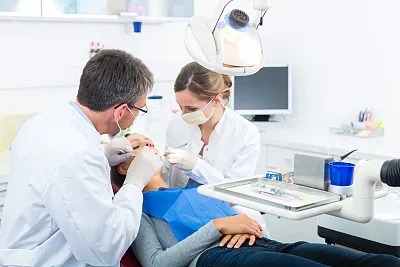The Essential Guide to Extracting a Tooth Safely and Effectively for Optimal Oral Health Solutions
Summary: Extracting a tooth is often necessary for maintaining optimal oral health, whether due to decay, overcrowding, or damage. This guide provides essential information on how to perform tooth extractions safely and effectively. It covers the importance of professional dental evaluations, the pre-extraction preparations one must undertake, the extraction process itself, and the vital post-extraction care required for recovery. Each segment is designed to enlighten readers on the procedures involved, the potential risks they can mitigate, and the best practices for ensuring a smooth healing process. By understanding these elements, individuals can better navigate the tooth extraction process and prioritize their oral health care.
1. Importance of Professional Dental Evaluations

Before considering a tooth extraction, it’s crucial to have a comprehensive evaluation conducted by a dental professional. Dentists can determine whether extraction is truly necessary and if so, which tooth requires removal. They examine the mouth, take X-rays, and assess the patients overall health status to make informed decisions.
A professional evaluation helps identify underlying issues that might complicate the extraction process, such as infections or bone density problems. Moreover, dentists can discuss potential implications of losing a tooth, including the impact on surrounding teeth and the alignment of the jaw.
By relying on expertise, patients can ensure that they understand their treatment options. Dentists can recommend alternatives to extraction, such as root canal treatments or crowns, providing a more conservative approach to dental issues.
2. Pre-Extraction Preparations Are Critical
Preparing for a tooth extraction starts with discussing the procedure with your dentist. This includes a thorough review of the patients medical history, current medications, and potential allergies. Informing the dentist of any heart conditions or recent surgeries is crucial to minimize risks during and after the extraction.
It’s also important to follow specific instructions provided by the dentist. This may involve fasting before the procedure, particularly for those requiring sedation. Knowing what to expect can reduce anxiety and help patients feel more in control of their dental health journey.
Patients should also consider arranging for a ride home post-extraction. Depending on the complexity of the procedure and whether sedation is used, it may not be safe for individuals to drive themselves. Proper planning ensures a smoother experience on the day of the extraction.
3. Understanding the Extraction Process
The tooth extraction process varies depending on the tooths condition and the complexity of its removal. For simple extractions, local anesthesia is often administered to numb the area around the tooth. The dentist then uses specific instruments to loosen the tooth before extracting it gently.
Complicated extractions, often involving impacted teeth such as wisdom teeth, may require surgical intervention. In such cases, general anesthesia may be used, and the dentist will make incisions in the gum tissue to remove the tooth. A thorough understanding of what entails each type of extraction can prepare patients mentally for the procedure.
Post-procedure, it’s essential for patients to follow their dentists instructions closely. This includes understanding signs of complications, such as excessive bleeding or swelling, and knowing when to seek further medical advice.
4. Post-Extraction Care for Optimal Recovery
After the extraction, the focus shifts to recovery. Proper post-extraction care significantly impacts healing. Patients should follow directions about pain management, which may include over-the-counter medications or prescribed pain relievers to manage discomfort effectively.
Maintaining optimal oral hygiene is essential, even after an extraction. While care should be taken to avoid disturbing the extraction site, gentle brushing and rinsing with saltwater can aid the healing process and prevent infection.
It’s vital to monitor the extraction site for any signs of complications like dry socket or infection. Following the dentist’s recommendations about follow-up appointments and activities such as smoking or strenuous exercise is critical for a smooth recovery.
Summary:
Understanding the essential steps for tooth extraction—from professional evaluations to post-extraction care—is crucial for maintaining oral health. Each stage requires attention, preparation, and a commitment to follow best practices, ensuring a safe and effective extraction experience.
This article is compiled by Vickong Dental and the content is for reference only.



